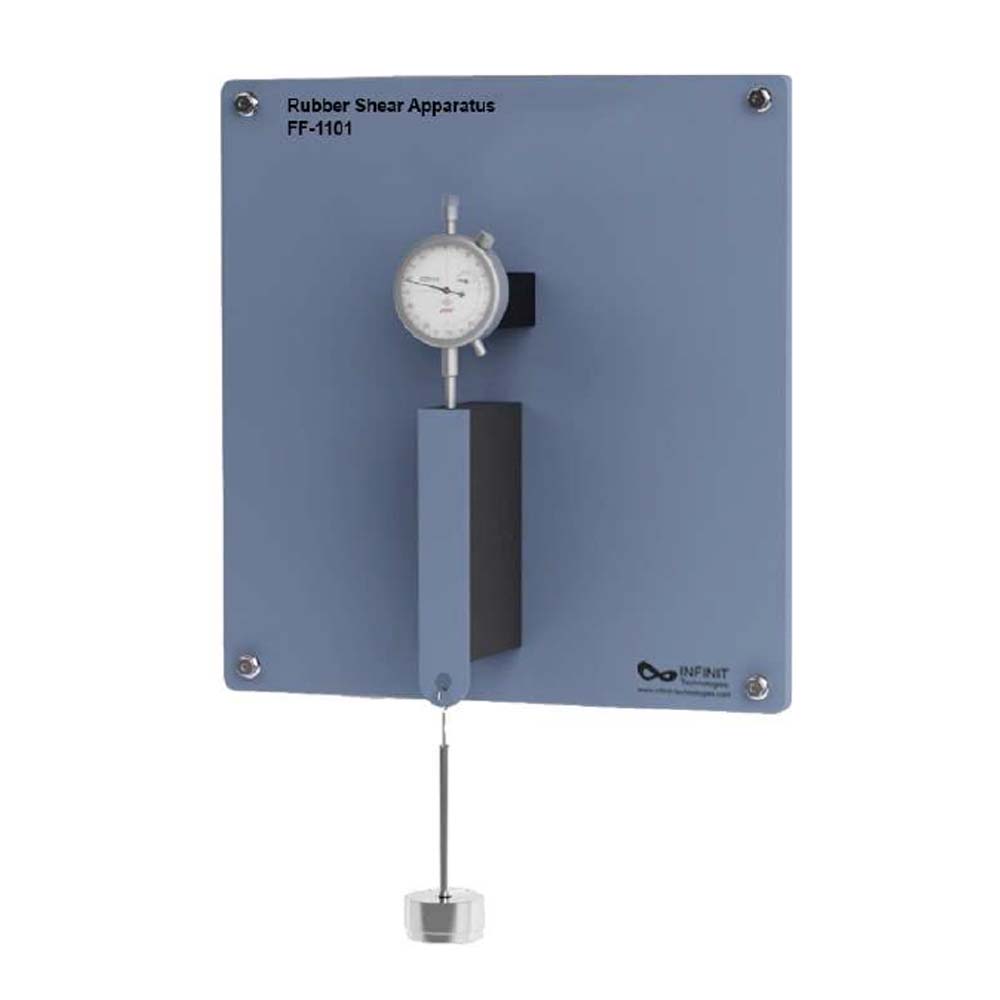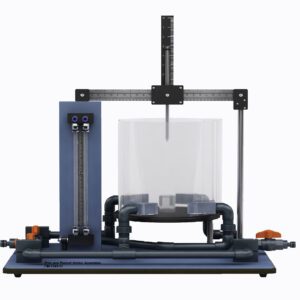The unit shown is used by students to conduct simple experiments to find out the
relationship between shear loading and shear deformation. The unit consists of a
rubber block of 192x100x25mm that is bonded between two plates made of
aluminium alloy. One plate is screwed to the wall with bolts while the other plate is
attached with a hook. The rubber block acts as shear body. To apply force on the
shear body, some weights are attached to the hook. A dial gauge is fitted onto the
bracket so that the deflection (or deformation) of the shear body can be measured.
Rubber blocks are used as shear body as they isolate vibrations. This is because
they absorb the shock energy from the vibrations and deform. This is also why
rubber blocks in shear force are used in engines and in equipment mounting. After
conducting experiments with this apparatus, students will understand the flexible
behavior of rubber. Students will find out that rubber in engineering terms is not as
‘elastic’ as steel and often exhibits a high degree of hysteresis.
Experiments
- To determine the variation of deflection with applied load.
- To investigate the relationship between shear stress and shear strain.
- To find the modulus of rigidity of the rubber block.
Specifications
- Rubber Block: 195x100x25mm
- Dial Gauge: 20mm x .01mm
- Maximum load: 9kg




